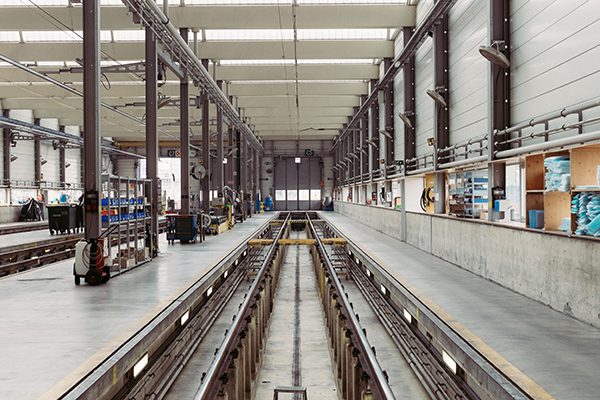By: Jeremy Wright, Director, Product Management at Advanced Technology Services
The standard PM protocol is designed around experience and time—not actual in-service performance, wear-and-tear or impact of production equipment. That means facilities might take equipment offline for PM, wasting valuable production time, crew resources, and materials. Forbes Magazine did a study and found that one in three dollars used to do PM type maintenance is wasted. Meaning we are replacing parts that don’t need to be replaced, taking down machines that don’t need to be taken down, etc., and a shift to condition based maintenance alleviates this waste
In comes Predictive Maintenance (PdM), a more efficient, data-driven method for identifying failure and managing equipment maintenance to maximize production, safety and efficiency while ensuring ideal operation and reliability of equipment. Rather than relying on a regimented schedule, PdM uses a conditions-based approach that measures and allocates factory equipment, scheduling repairs and upgrades according to the machine’s actual health and performance. PdM is a game-changer for optimizing maintenance, production and cost efficiency, as it provides a more reliable method to detect and prevent potential failures.

Better problem identification. PdM uses advanced diagnostic and sensing technologies, such as ultrasound, thermography, vibration and oil analysis, to identify problems in real time—as the equipment is running. This provides performance data and insight that cannot be identified when the machine is taken offline for traditional PM. It also gives maintenance staff a clearer picture of the actual wear-and-tear on equipment, rather than making assumptions.
Heightened performance efficiencies. Traditional PM techniques could take equipment offline far more than necessary and still not provide assurance against a failure. PdM, on the other hand, can actually improve production and provide long-term savings. Performing maintenance when it’s required avoids unnecessary halts in production and means less time, money, parts and supplies consumed by unnecessary maintenance. In fact, PdM has been shown to eliminate as much as 30 percent of time-based PM tasks, freeing up those capital and human resources for other critical tasks.
Ongoing process improvement. The data and analysis gathered through baselining, tracking and documenting equipment performance offers tremendous visibility that can inform production improvements. Knowing that specific conditions or factors help equipment to operate at peak performance, facilities can begin looking at environmental adjustments to ensure those optimal conditions. This not only extends the time between maintenance tasks, but also improves overall production results.
Seamless integration with work order systems. By integrating the data generated by PdM into CMMS and other maintenance software, PdM provides a seamless solution that adds no further burden to the workflow and ensures that repair/replacement work is conducted in a timely manner. This eases the supervisory burden, again freeing up those resources to address more strategic initiatives.
Minimized liability. In the event of a product recall, having a documented log of equipment statistics can help to demonstrate that your facility took every possible precaution to prevent the situation. The data could provide some relief to help lessen the damage impact.
Heightened safety. By better understanding how equipment is performing and where potential risks lie, facilities can mitigate safety situations, such as fluid leaks, overheating, and dangerous electrical or hydraulic situations that could put facility personnel at risk.
Better replacement planning. With greater insight into equipment performance, issues and expected useful life, facilities can better plan and budget for replacement. The data gleaned from PdM can help to optimize capital expenditure planning while ensuring daily optimal performance of the assets still in place.
First, evaluate your existing maintenance program performance and, using data, take an in-depth look at metrics like downtime, mean time between failures, parts spend, technician cost and response time. You can then determine how much of a cost benefit even a small improvement in approaches would be worth to your company.
Next, take a good look at the equipment you have and rate it in terms of criticality. Ask yourself of each machine: if it were offline, how much would it either slow down or even shut down operations? Any machine that will negatively impact safety, the environment, or production upon failure can be considered a critical machine. Also give weight to machines that experience frequent failures, as these will likely fall into the “critical” category.
Finally, determine your need for critical spare parts. PdM is a master at identifying which parts are likely to or are in danger of failing. A good critical spares analysis will complement that data and maximize efficiency; if a part is readily available from vendors and not essential to equipment function, it obviously does not need to be held in inventory; one that takes weeks or months to receive, though, may be critical in nature and thus should be kept on site, in reserve.
 About the Author
About the Author
Jeremy Wright is a recognized expert and leader in the field of industrial machinery lubrication management and reliability. He is a proven technical educator and consultant – leading the development of consulting programs and methodologies for many of the World’s top manufacturing sites. He is also active in numerous professional organizations, including standards organizations, with the purpose of driving reliability to the forefront of many industries.
In this episode, I sat down with Beejan Giga, Director | Partner and Caleb Emerson, Senior Results Manager at Carpedia International. We discussed the insights behind their recent Industry Today article, “Thinking Three Moves Ahead” and together we explored how manufacturers can plan more strategically, align with their suppliers, and build the operational discipline needed to support intentional, sustainable growth. It was a conversation packed with practical perspectives on navigating a fast-changing industry landscape.